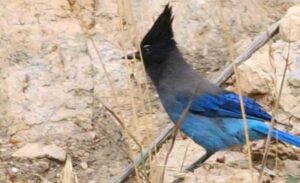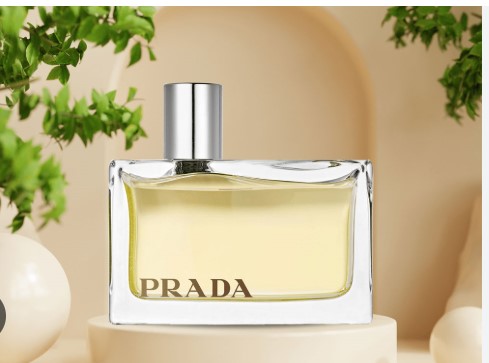Cartoon characters come in all shapes, sizes, and hairstyles, but there’s something uniquely compelling about bald characters. Whether they sport a shiny dome or a few wisps of hair, bald cartoon characters have left an indelible mark on popular culture. They transcend genres, appealing to audiences with their distinctive looks, memorable personalities, and often, their underdog charm. From the wise and powerful to the bumbling and comical, let’s explore the fascinating world of bald cartoon characters and the reasons behind their enduring appeal.
The Iconic Bald Heads of Animation
Charlie Brown
Perhaps one of the most beloved bald characters is Charlie Brown from Charles M. Schulz’s Peanuts. Despite being depicted with a few sparse curls, Charlie Brown is often considered bald. His round head and simple facial features are instantly recognizable. Charlie Brown embodies the everyman, facing life’s challenges with a mix of optimism and melancholy. His baldness emphasizes his vulnerability and relatable nature, making him a timeless character.
Homer Simpson
From the long-running animated series The Simpsons, Homer Simpson is an iconic figure in American pop culture. His two hairs on the top of his head and his pronounced baldness add to his everyman appeal. Homer is often portrayed as lazy, loving, and sometimes dim-witted, but his heart is always in the right place. His bald head is a key part of his visual identity, contributing to his comedic persona and the show’s satirical edge.
Elmer Fudd
Elmer Fudd, the perpetual adversary of Bugs Bunny in the Looney Tunes series, is another classic bald character. His distinctive speech impediment and bald head make him a memorable figure in animation. Elmer’s baldness accentuates his somewhat hapless nature, often outwitted by Bugs Bunny in various slapstick scenarios. Despite his lack of hair, Elmer’s persistence and determination are his defining traits.
Caillou
Caillou, the star of the Canadian children’s series of the same name, is a four-year-old boy known for his bald head. Unlike other characters on this list, Caillou’s baldness has been a point of curiosity and discussion among fans and parents. The creators have stated that his baldness is meant to represent his youthful innocence. Caillou’s simple design and relatable childhood experiences have made him a staple in children’s programming.
Krillin
In the world of anime, Krillin from Dragon Ball stands out as a notable bald character. Initially introduced as a monk, Krillin’s baldness is part of his training regimen. As a character, he evolves from a rival to Goku to one of his closest allies. Krillin’s bald head symbolizes his dedication to martial arts and his growth as a fighter. Despite his lack of hair, he is a beloved and powerful character in the Dragon Ball series.
One Punch Man (Saitama)
Saitama, the protagonist of the anime One Punch Man, is another bald character who has gained immense popularity. Saitama’s baldness is a result of his intense training regime, which granted him overwhelming strength at the cost of his hair. His plain appearance contrasts sharply with his incredible power, leading to comedic and dramatic moments throughout the series. Saitama’s bald head is a visual cue to his unique and often ironic journey as a hero.
The Symbolism of Baldness in Cartoons
Bald cartoon characters often carry deeper symbolic meanings, ranging from wisdom and strength to vulnerability and comedic value. Their baldness can serve as a visual shorthand for their personality traits or roles within a story. Here are some common symbolic interpretations of baldness in cartoons:
Wisdom and Authority
Bald characters are frequently depicted as wise or authoritative figures. Their lack of hair can signify experience, age, or a monk-like dedication to a particular discipline. Characters like Krillin from Dragon Ball and Master Roshi from the same series exemplify this trope. Their bald heads denote their deep knowledge and mastery of martial arts.
Vulnerability and Relatability
Baldness can also signify vulnerability, making characters more relatable to the audience. Charlie Brown’s bald head is a perfect example, highlighting his struggles and the universal challenges of growing up. His baldness makes him appear more childlike and innocent, enhancing the audience’s empathy towards him.
Comedic Elements
In many cases, baldness is used for comedic effect. Homer Simpson and Elmer Fudd’s bald heads contribute to their humorous personas. The simplicity of their designs and the exaggeration of their features amplify the comedic scenarios they find themselves in. Their baldness often makes them appear more bumbling and endearing.
Unique Identity
A bald head can make a character stand out, giving them a unique identity in a crowded media landscape. Saitama’s baldness in One Punch Man sets him apart from other superheroes and is integral to his character design. It symbolizes his extraordinary strength and the sacrifices he made to achieve it, making him an unforgettable character.
The Cultural Impact of Bald Cartoon Characters
Bald cartoon characters have left a significant impact on popular culture, influencing everything from merchandise to cosplay. Their distinct looks and memorable personalities make them favorites among fans of all ages. Here are a few ways in which these characters have permeated popular culture:
Merchandising and Branding
Many bald cartoon characters have become merchandising powerhouses. Homer Simpson, for example, is featured on a wide array of products, from clothing to household items. His bald head is a key part of his brand identity. Similarly, Saitama’s bald head and iconic yellow jumpsuit make him a popular choice for action figures and apparel.
Cosplay and Fan Art
The simplicity of bald characters often makes them popular choices for cosplay and fan art. Characters like Krillin and Saitama are frequently depicted at anime conventions and in fan-created artworks. Their distinctive appearances make them easily recognizable and a fun challenge for cosplayers.
Parodies and Homages
Bald cartoon characters are often parodied or paid homage to in other media. Their unique designs and iconic status make them ripe for comedic reinterpretation. For instance, various animated shows and movies have spoofed characters like Homer Simpson and Elmer Fudd, highlighting their cultural significance.
Representation and Inclusivity
Bald cartoon characters also contribute to representation and inclusivity in media. They showcase a range of personalities, backgrounds, and stories, demonstrating that hair (or the lack thereof) doesn’t define a character’s worth or appeal. This can be particularly impactful for audiences who see themselves reflected in these characters.
Conclusion
Bald cartoon characters hold a special place in the world of animation. Their distinctive looks, combined with their rich personalities and symbolic meanings, make them enduring figures in popular culture. Whether they evoke laughter, empathy, or admiration, these characters prove that hair is not a prerequisite for making a lasting impression. From Charlie Brown’s relatable struggles to Saitama’s unparalleled strength, bald cartoon characters continue to captivate and inspire audiences around the world. Their enduring appeal lies in their ability to transcend superficial traits and connect with viewers on a deeper level, making them timeless icons in the animated universe.












+ There are no comments
Add yours